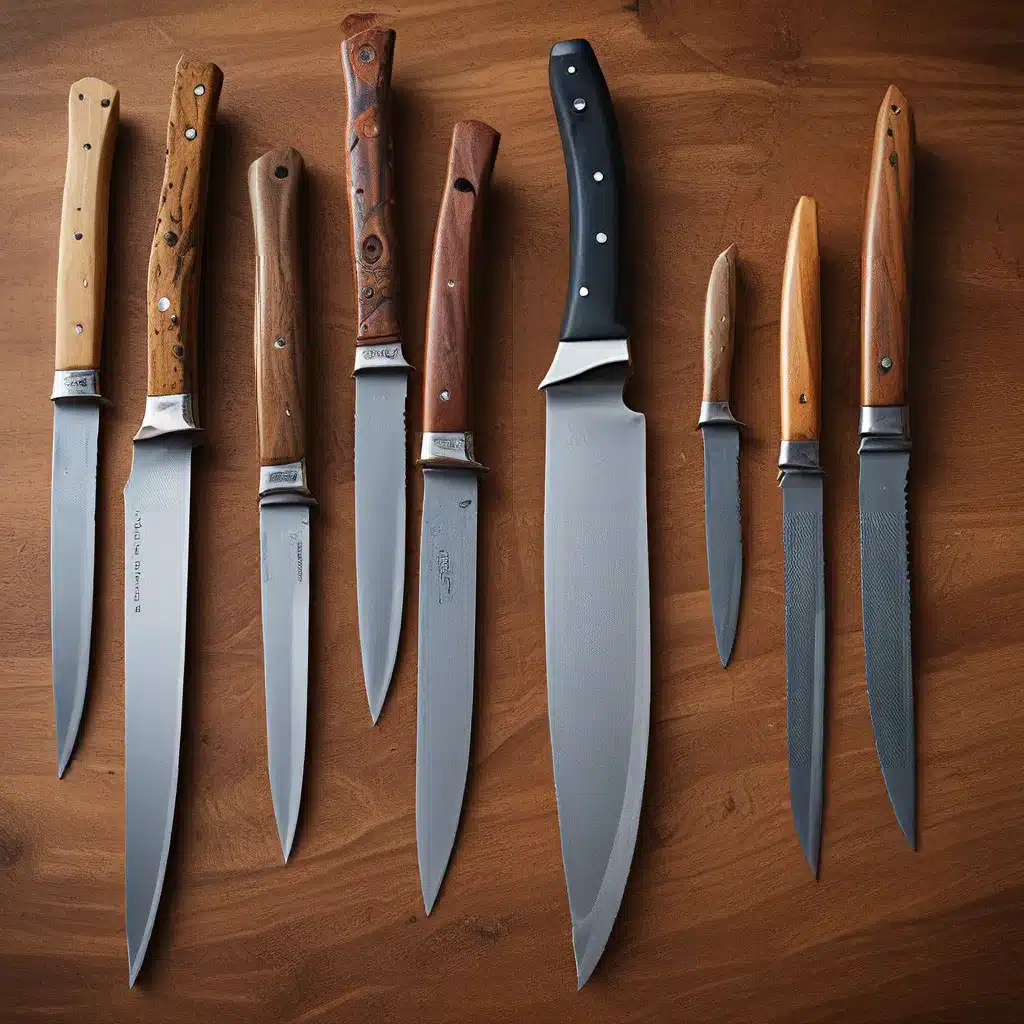
As an enthusiastic knife aficionado, I’ve always been fascinated by the rich history and evolution of these essential tools. From the humble flint blades of our ancestors to the high-tech marvels of modern-day craftsmanship, the story of knife technology is a captivating one that reveals the ingenuity and adaptability of the human spirit.
The Universal Appeal of the Blade
One of the most intriguing aspects of knife history is how multiple human cultures, separated by vast distances and time periods, independently developed similar cutting tools. For example, the ancient Chinese mastered the art of bows and arrows, including the impressive crossbow, while European cultures also pioneered the longbow and crossbow technology, albeit at a different time. Similarly, Native American communities were found to have their own variations of the bow and arrow upon the arrival of European colonists.
What’s remarkable is that these diverse civilizations, without any significant direct contact, all recognized the immense utility and versatility of the blade. This universal appeal speaks to the fundamental human need for tools that can aid in tasks ranging from hunting and self-defense to food preparation and even artistic expression.
Tracing the Origins of Knife Technology
To understand how these various cultures arrived at such similar technological solutions, we must delve into the fascinating origins of knife technology. Archaeologists and historians have uncovered evidence suggesting that the earliest known stone blades date back thousands of years, with some of the oldest examples found in Africa and Asia.
According to a Reddit discussion, the emergence of these primitive cutting tools was likely driven by the fundamental human needs for hunting, butchering, and self-defense. As our ancestors evolved and spread across the globe, they independently recognized the value of a sharp, durable edge and began experimenting with various materials and designs.
The Blade Evolves: From Stone to Steel
Over the course of millennia, the humble stone blade underwent a remarkable transformation. As human societies developed more advanced metalworking techniques, the knife evolved from a crude stone tool into a sophisticated metal instrument. The introduction of bronze and later iron and steel allowed for the creation of stronger, more durable, and sharper blades.
This technological progression not only improved the functionality of knives but also led to the development of specialized cutting tools for specific tasks. Blacksmiths and artisans in different regions began to experiment with unique blade shapes, materials, and decorative elements, giving rise to the diverse array of knives we see today.
The Crossroads of Necessity and Craftsmanship
The story of knife technology is not just about the practical applications of these tools; it’s also a tale of human ingenuity, creativity, and cultural expression. As civilizations evolved, the knife became a canvas for artistic expression, with master craftsmen incorporating intricate designs, patterns, and even spiritual or symbolic elements into their work.
The advancement of forensic technology, such as the FBI’s Integrated Automated Fingerprint Identification System (IAFIS), has also shed light on the role of knives in criminal investigations, highlighting the importance of these tools in both constructive and destructive applications.
Exploring the Cutting Edge of Knife Technology
Today, the world of knife technology is as vibrant and diverse as ever. Innovative materials, such as high-performance steels, ceramics, and even synthetic composites, are being used to create blades that are sharper, stronger, and more durable than ever before. Meanwhile, advancements in manufacturing techniques have allowed for the production of intricate, customized knife designs that cater to the diverse needs and preferences of enthusiasts, professionals, and collectors alike.
As I delve deeper into the rich history and evolving landscape of knife technology, I can’t help but marvel at the resilience and adaptability of this essential tool. From the ancient stone blades to the high-tech marvels of the modern era, the story of the knife is a testament to the enduring human drive to create, innovate, and push the boundaries of what is possible.
Discovering the Knife’s Endless Potential
As I continue my exploration of the knife’s fascinating backstory, I’m left with a sense of wonder and curiosity. What other groundbreaking advancements in knife technology are on the horizon? How will future generations of designers and artisans continue to redefine the capabilities of this ubiquitous tool?
One thing is certain: the knife’s story is far from over. With each new innovation and each unique cultural interpretation, the potential of the blade continues to be unlocked and expanded. And as an avid knife enthusiast, I can’t wait to see what the future holds for this enduring symbol of human ingenuity and creativity.


